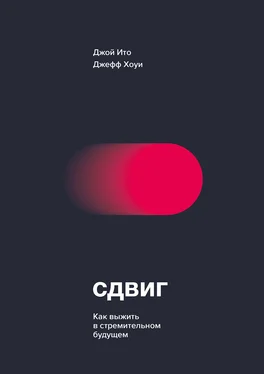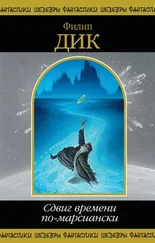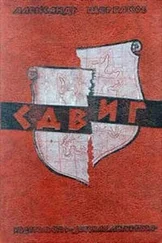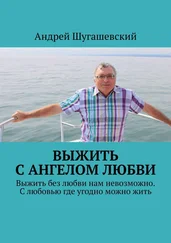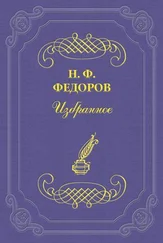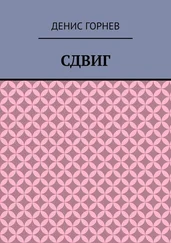Anne Trafton, “Seeing the Light”, MIT News , April 20, 2011, http://news.mit.edu/2011/blindness-boyden-0420.
Karl Deisseroth, “Optogenetics: Controlling the Brain with Light [Extended Version]”, Scientific American , October 20, 2010, http://www.scientificamerican.com/article/optogenetics-controlling.
Karl Deisseroth, “Optogenetics: Controlling the Brain with Light [Extended Version]”, Scientific American , October 20, 2010, http://www.scientificamerican.com/article/optogenetics-controlling.
Ernst Bamberg, “Optogenetics”, Max-Planck-Gesellschaft , 2010, https://www.mpg.de/18011/Optogenetics.
Udi Nussinovitch and Lior Gepstein, “Optogenetics for in Vivo Cardiac Pacing and Resynchronization Therapies”, Nature Biotechnology 33, no. 7 (July 2015): 750-54, doi: 10.1038/nbt.3268.
Deisseroth, “Optogenetics: Controlling the Brain with Light [Extended Version]”. Scientific American , October 20, 2010.
“1985 | Timeline of Computer History”, Computer History Museum , accessed June 7, 2016, http://www.computerhistory.org/timeline/1985.
Процитировано в книге Tom Collins, The Legendary Model T Ford: The Ultimate History of America’s First Great Automobile (Fort Collins, CO.: Krause Publications, 2007), 155.
Henry Ford, My Life and Work (New York: Doubleday, 1922), 73.
David Gartman, “Tough Guys and Pretty Boys: The Cultural Antagonisms of Engineering and Aesthetics in Automotive History”, Automobile in American Life and Society , accessed June 7, 2016, http://www.autolife.umd.umich.edu/Design/Gartman/D_Casestudy/D_Casestudy3.htm.
Elizabeth B-N Sanders, “From User-Centered to Participatory Design Approaches”, Design and the Social Sciences: Making Connections , 2002, 1–8.
Процитировано в статье Drew Hansen, “Myth Busted: Steve Jobs Did Listen to Customers”, Forbes , December 19, 2013, http://www.forbes.com/sites/drewhansen/2013/12/19/myth-busted-steve-jobs-did-listen-to-customers.
Sanders, “From User-Centered to Participatory Design Approaches”. Design and the Social Sciences, J. Frascara, еd. (Abingdon: Taylor & Francis Books Limited, 2002).
По-английски suitcase word. Прим. пер.
Бросок с обратной стороны корзины, когда кольцо используется атакующим игроком для защиты мяча от возможного блок-шота высокорослым соперником. Прим. пер.
И чем меньше говорить об «игре в го, кашляющей кровью» 1835 года, тем лучше.
Sensei’s Library, “Excellent Move”, в редакции от 31 мая 2016 года, http://senseis.xmp.net/?Myoshu.
Звучит невероятно, не так ли? И все-таки это чистая правда. Доступное объяснение сопутствующих математических расчетов см. Eliene Augenbraun, “Epic Math Battles: Go versus Atoms”, Scientific American 60-Second Science Video , May 19, 2016, http://www.scientificamerican.com/video/epic-math-battles-go-versus-atoms.
Xiangchuan Chen, Daren Zhang, Xiaochu Zhang, Zhihao Li, Xiaomei Meng, Sheng He, Xiaoping Hu, “A Functional MRI Study of High-Level Cognition: II. The Game of GO”, Cognitive Brain Research , 16, issue 1 (March 2003) 32–37, ISSN0926-6410, http://dx.doi.org/10.1016/S0926-6410(02)00206-9.
Брутфорс (или метод «грубой силы») — метод решения математических задач путем полного перебора вариантов. Прим. ред.
Rémi Coulom, “Efficient Selectivity and Backup Operators in Monte-Carlo Tree Search”. Computers and Games, 5th International Conference, CG 2006, Turin, Italy, May 29–31, 2006, revised papers , H. Jaap van den Herik, Paolo Ciancarini, H. H. L. M. Donkers, eds., Springer, 72-8, http://citeseerx.ist.psu.edu/viewdoc/summary?doi=10.1.1.81.6817.
David Silver, Aja Huang, Chris J. Maddison, Arthur Guez, Laurent Sifre, George Van Den Driessche, Julian Schrittwieser et al., “Mastering the Game of Go with Deep Neural Networks and Tree Search”, Nature 529, no. 7587 (2016): 484–489.
Elizabeth Gibney, “Go Players React to Computer Defeat”, Nature News , January 27, 2016, http://www.nature.com/news/go-players-react-to-computer-defeat-1.19255.
Марк Цукерберг, пост в Facebook, датированный 27 января 2016 года, https://www.facebook.com/zuck/posts/10102619979696481?comment_id=10102620696759481-comment_tracking=%7B%22tn%22%3A%22R0%22%7D.
Cade Metz, “In Two Moves, AlphaGo and Lee Sedol Redefined the Future”, Wired , March 16, 2016, http://www.wired.com/2016/03/two-moves-alphago-lee-sedol-redefined-future.
Cade Metz, “The Sadness and Beauty of Watching Google’s AI Play Go”, Wired, March 11, 2016, http://www.wired.com/2016/03/sadness-beauty-watching-googles-ai-play-go.
В 2016 году Суперкубок собрал 111,9 миллиона зрителей — сравните с 280 миллионами, наблюдавшими за игрой Седола против AlphaGo. Frank Pallotta и Brian Stelter, “Super Bowl 50 Audience Is Third Largest in TV History”, CNN Money , February 8, 2016, http://money.cnn.com/2016/02/08/media/super-bowl-50-ratings.
Baek Byung-yeul, “Lee-AlphaGo Match Puts Go Under Spotlight”, Korea Times , March 10, 2016, http://www.koreatimes.co.kr/www/news/nation/2016/04/663_200122.html.
«Она» (англ. Her ) — американская фантастическая мелодрама режиссёра и сценариста Спайка Джонза. Действие картины происходит в недалеком будущем, где люди перестали писать письма сами, и за них это делают специальные организации. Книги перестали выпускать на бумаге, и в мире создали первую операционную систему, основанную на искусственном интеллекте. Одинокий писатель покупает одну из таких ОС, которая назвала себя Самантой. Между ними возникает дружба, и позже это перерастает в сильную любовь, которая заставит измениться главного героя. Прим. пер.
Читать дальше
Конец ознакомительного отрывка
Купить книгу
